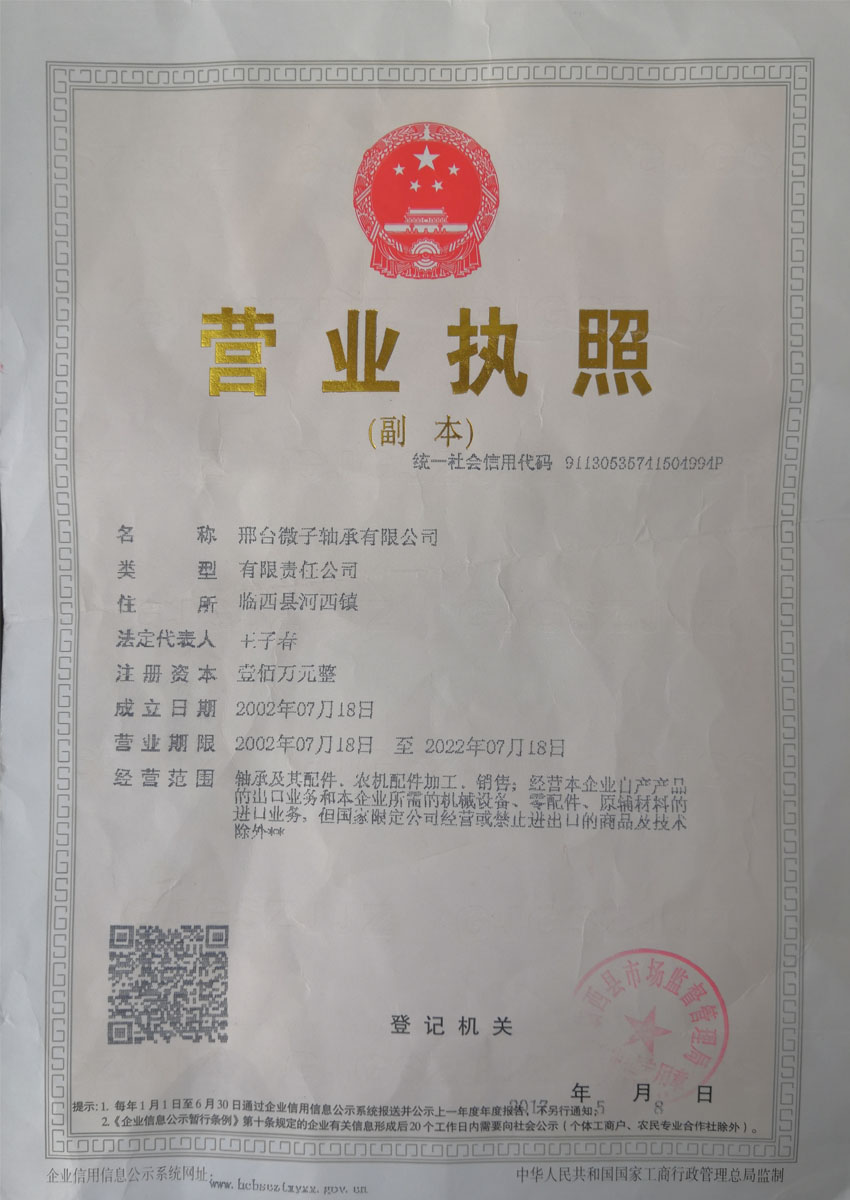
9 月 . 30, 2024 02:32 Back to list
Exploring the Benefits of Double Angular Contact Ball Bearings in Machinery Applications
Understanding Double Angular Contact Ball Bearings
Double angular contact ball bearings are critical components in various mechanical systems, renowned for their ability to support both axial and radial loads effectively. These bearings are commonly used in applications requiring high precision and durability, such as in the automotive and aerospace industries, as well as in electric motors and machine tool spindles.
Key Features
A double angular contact ball bearing consists of two rows of balls that are arranged in such a way that they can accommodate forces in both directions, making them ideal for applications that experience thrust loads from both sides. The inner and outer races are angled relative to the axis of the bearing, hence the name angular contact. This design allows for a larger contact area between the balls and the raceways, significantly increasing the load-carrying capacity and stiffness of the bearing.
One of the standout features of double angular contact ball bearings is their ability to handle high-speed operation while maintaining excellent accuracy. The design minimizes friction, enabling smoother rotation and less heat generation. This characteristic is essential in applications such as spindle assemblies in CNC machines, where precision and reliability are paramount.
Applications
Double angular contact ball bearings find numerous applications across various industries. In the automotive sector, they are often utilized in wheel hubs and transmissions, where they provide the necessary support for axial loads arising from acceleration and braking forces. In the aerospace industry, these bearings are integral to aircraft engines and landing gear systems, where reliability and safety are critical.
Moreover, industries that rely on high-speed machinery, such as printing or packaging, also employ double angular contact ball bearings. Their design allows for high rotational speeds while maintaining stability and precision, making them a popular choice for spindle bearings in high-performance CNC mills and lathes.
Advantages
The advantages of using double angular contact ball bearings can be summarized as follows
2. Reduced Maintenance Their robust construction and high-quality materials often result in a longer lifespan, reducing the need for frequent maintenance and replacement.
double angular contact ball bearing

3. Versatility These bearings can be configured in various arrangements, such as back-to-back or face-to-face, to meet specific application requirements.
4. Enhanced Stability The angular contact design provides better rigidity and stability compared to deep groove ball bearings, making them suitable for high-speed applications where accuracy is crucial.
5. Improved Efficiency Lower friction and better heat dissipation enhance overall system efficiency, contributing to energy savings.
Considerations for Selection
When selecting a double angular contact ball bearing for a specific application, several factors must be considered
- Load Conditions Understanding the types of loads (i.e., radial or axial) the bearing will encounter is essential in choosing the right design and configuration.
- Operating Speed The maximum speed at which the bearing will operate influences material selection and lubrication methods.
- Temperature Range The bearing should be capable of operating effectively within the temperature ranges dictated by the application.
- Alignment and Installation Proper alignment during installation is vital to ensure longevity and performance. Any misalignment can lead to premature failure.
Conclusion
Double angular contact ball bearings are indispensable in modern machinery and equipment. Their ability to effectively manage axial and radial loads at high speeds makes them a preferred choice across various industries. By understanding their design, applications, and advantages, engineers and manufacturers can make informed decisions when selecting bearings for their specific requirements. As technology advances, the role of double angular contact ball bearings will continue to grow, contributing to the efficiency and reliability of mechanical systems worldwide.
Latest news
-
Unlocking Efficiency with Spherical Roller Bearings
NewsOct.29,2024
-
The Ultimate Guide to Thrust Ball Bearings
NewsOct.29,2024
-
The Power of Thrust Roller Bearings: Engineered for Excellence
NewsOct.29,2024
-
The Power of Deep Groove Ball Bearings for Your Application Needs!
NewsOct.29,2024
-
The Power and Performance of Cylindrical Roller Bearings
NewsOct.29,2024
-
High-Quality Ball Bearing Manufacturing Machines
NewsOct.29,2024
